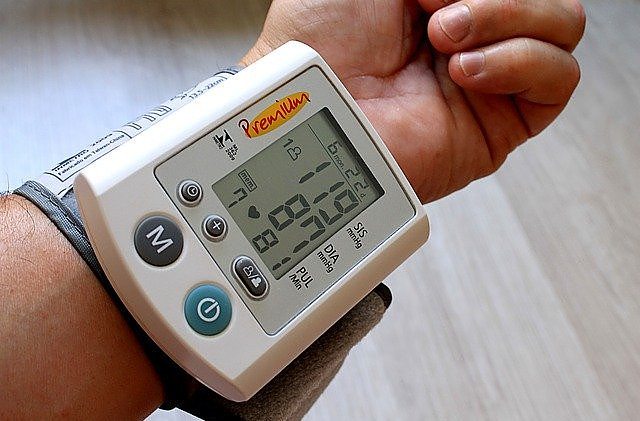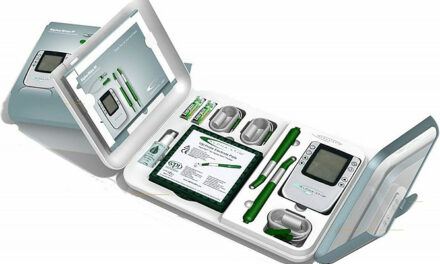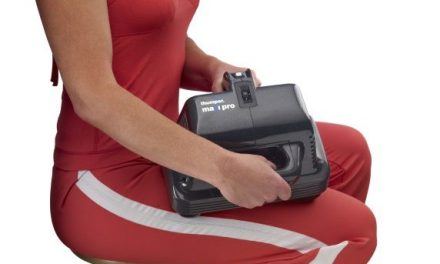When it comes to controlling your blood pressure, the occasional clinical check may not give you the actual picture because your blood pressure can change anytime during the day.
A home blood pressure monitor allows you to independently check your blood pressure at home at any time of the day. The question now is how dependable a home blood pressure monitor is? And, how long does a home blood pressure monitor last?
In this article, we will look at answers to those questions carefully, and also consider how you can maximize the life span of your home blood pressure monitor.
First thing first… so what we really mean by a home blood pressure monitor?
What is a Home Blood Pressure Monitor?
A home blood pressure monitor is a self blood monitoring device that can be integrated into the care of people with either high blood or low blood pressure at a home setting.
Studies show that monitoring your blood pressure at home can help you control it.
For example, a 2010 analysis of an independent Cochrane Collaboration review discovered that self-monitoring lowered numbers in both diastolic (lowest pressure in your artery when the heart is at rest) and systolic (highest pressure in your artery when the heart is pumping blood to the body) blood pressure.
Also, a recent preliminary study indicates that monitoring your blood pressure at home may help individuals with uncontrolled hypertension to be able to control their numbers.
Home blood pressure monitor, according to AHA (American Heart Association) can also be helpful to pregnant women who are experiencing pre-eclampsia or pregnancy-induced hypertension.
Now we know, that measuring blood pressure at home is a good thing. But, what are the types of blood pressure devices available to do so?
Let’s find out…
Types of Home Blood Pressure Monitors
There are two major types of home blood pressure monitors. This includes the manual (aneroid0 monitor and the digital monitor.
1. The Manual (aneroid) Monitors
The manual monitor measures your blood pressure manually. You read the gauge by looking at the position of the pointer on the dial.
These monitors come with a cuff that is wrapped around the upper arm, and a rubber bulb that inflates it when you squeezed by hand.
These manual monitors generally cost less as compared to digital monitors. The cuff features an in-built stethoscope, so, you do not have to get a separate one.
Again, the manual unit allows you to easily wear the cuff with one hand.
These manual monitors are also portable, which allows users to easily carry them from one place to another.

Some Pitfalls of Manual Monitors
They are complex devices that can easily damage and become less accurate. When the device does not have a metal ring to secure the cuff, it may be difficult to use. Additionally, some users find it hard to squeeze the cuff inflating rubber bulb.
The manual monitor type may not be ideal for the hearing-impaired persons because of the necessity to listen to the heartbeat through the stethoscope.
In addition, most importantly, you might need some training to understand the concept of how these monitors work and how to measure the blood pressure using it.
2. The Digital Monitors
This type of home blood pressure monitors is more popular for monitoring blood pressure, and they are generally easier to use than the manual units.
These digital monitors feature a stethoscope and gauge in one unit with an error indicator.
Your blood pressure reading shows on a small screen, which is easier to read compared to a dial. Some digital units have a paper printout that provides you with your reading records.
Depending on the unit model, the cuff inflation is either manual or automatic. The digital monitors are perfect for the hearing-impaired persons because it isn’t necessary to listen to the heartbeat through the stethoscope.
Tip: Here are the best blood pressure monitors of the year.
Some Pitfalls of Digital monitors
An irregular heart rate or body movements can affect the accuracy of a digital monitor.
Some models can only work with the left arm, which makes them difficult for some people to make use of.
The digital monitor types are more expensive compared to the manual, and they also make use of batteries.
What Determines the Longevity of a Home Blood Pressure Monitor?
The longevity of a home blood pressure monitor varies from one to five years depending on the model, brands, functionality, and usage. But what determines the longevity majorly is the usage and maintenance.
-
Usage
It is very important to know how to operate and handle the monitor for accuracy and longevity.
Dropping or exposing this device to liquid materials may cause damages and affect the life span of the monitor.
-
Maintenance
Another way to ensure that your home blood pressure meter lasts longer is through proper maintenance. When you fail to maintain your monitor, the performance rate and lifespan may drop, and also result in inappropriate blood pressure readings.
Unit Warranty vs. Actual Lifespan of a Blood Pressure Monitor
The warranty period may vary from 1 to 3 years depending on the product brands or model (though some devices extend their warranty periods for an additional cost). But the device is manufactured and designed for longer service life. When you take proper care of your home blood pressure monitor, it may serve you for up to five years and beyond.
The Longevity of the Main Unit vs. Attachment and Accessories
Generally, the main unit of blood pressure monitor lasts longer than the attachment and accessories. The main unit may last up to five years, but the attachment and accessories such as cuffs need periodic replacement throughout the life of the main unit.
For example, when buying a cuff, ensure you choose a cuff that fits your wrist or upper arm circumference as the wrong cuff can affect accuracy.
Maintenance Tips to Lengthen the Device Life Span
There are many types of maintenance, but the maintenance of medical equipment such as blood pressure monitor falls under two types which include preventive and corrective maintenance.
The preventive maintenance minimizes total replacement or emergency repair.
This maintenance type lowers down expenses and provides you with greater investment return over time.
While corrective maintenance identifies, isolates, and repairs the device’s faults, this maintenance type is used to repair devices straightway before more significant damages occur.
Here are some maintenance tips to lengthen the device life span;
-
Train users about the maintenance
This is a very important step, making all users of the blood pressure monitor to properly understand how best to maintain their devices.
For example, some devices are not supposed to come in contact with water, or fire, some are to be sterilized, cleaned, and returned to their different boxes or cases immediately after use.
Some untrained users (or nursing home staff) may cause a device to breakdown when they do not understand how properly to use it.
-
Carry out a routine check
In device maintenance, a routine check is very necessary because it helps to lengthen its life span. It also helps to note when the device begins to malfunction before developing some faults. Routine check helps to make sure the device is in perfect condition and ready for the activities of the day.
-
Keep the device clean and maintain a clean working environment
To ensure that your device lasts longer, you must maintain a clean environment. Avoid fluids, food, or flammable substances around or near the device, so they do not contaminate your device. Make sure your devices are kept clean after use.
-
Off the device when not in use
This is very important. Your medical device should always be turned off each time you are done using it. This will help conserve the power and increase the device’s span. This tip also helps to prevent overheating and harm from the power supply.
-
Disinfect and sterilize devices
Some devices give wrong readings, and one major reason for that is dirt on the device surfaces. Make sure you always disinfect or sterilize your device properly after use, as it can prevent giving wrong readings and spread of diseases as well.
What are the Signs of an Overused or Faulty Blood Pressure Meter?
Several signs show a blood pressure is faulty or overused.
These signs include;
-
The screen blinks after you press the start button
When your blood pressure monitor displays nothing on the screen as soon as you press the start button, two things must be involved. Either the batteries are drained, or there is an issue with the battery terminals.
-
The cuff refuses to inflate
Leakage in the cuff may have been the reason the cuff could not inflate. Another possible reason is when the voltage of your battery is too low.
-
The unit refuses to measure
When the unit refuses to measure, it’s either the cuff is not properly fastened or the positioning of the cuff is wrong.
-
The unit reading is too low or high
This may come as a result of using the wrong cuff size or a faulty unit.
-
The reading differs from the one measured at the doctor’s office or a clinic
This is another sign of a faulty or overused monitor. A wrong cuff can give you a wrong reading. Several reasons can cause some differences in measurement.

Tip: Did you know that the RESPeRATE Device can help you lower your blood pressure?
Other Factors Affecting the Accuracy of the Blood Pressure Monitor
Several other factors could affect the accuracy of your blood pressure monitor, these include;
-
The cuff size
It is very important to make sure you are using the proper size of blood pressure cuff on your upper arm anytime you are taking a measurement. Most errors in blood pressure measurement happen because of inadequate blood pressure cuff size (when the patient’s arm does not fall within the cuffs range indicator).
Research shows that measuring your blood pressure with a small-sized cuff can increase your systolic blood pressure measurement from 10 to 40 mmHg.
-
Using blood pressure cuff over clothing
When measuring your blood pressure, always place the cuff directly on your arm.
Researches show that using the cuff over your clothing can cause your systolic blood pressure to rise from 10 to 50mmHg.
-
Tobacco
Smoking tobacco products such as smokeless tobacco, cigars, and cigarettes (all contain nicotine) will increase your blood pressure temporarily, so you are advised to avoid smoking at least for 30mins before measuring your blood pressure.
-
Caffeine/Alcohol
Caffeine and alcohol such as coffee, tea, and sodas can spike the levels of your blood pressure so, therefore, you should stay away from caffeine and alcohol at least for 30 mins before measuring your blood pressure.
-
Room temperature
Blood pressure seems to rise when you are cold. So, if the room temperature is too cold, it may cause your blood pressure reading to rise.
-
Unsupported back, arm, and feet
You must always sit in a comfortable chair when measuring your blood pressure. With your arm and back supported and legs uncrossed.
Having your back unsupported may increase your diastolic blood pressure measurement by 6mmHg.
And, having your legs crossed may also increase your systolic blood pressure with 2 to 8mmHg.
Positioning your upper arm below the heart level may cause higher readings, while placing your upper arm above the heart level may as well cause lower readings.
These differences can decrease or increase your systolic blood pressure by 2mmHg for each inch below or above your heart level.
-
Talking
Studies show that talking while measuring your blood pressure may increase your systolic measurement by 10 to 15mmHg.
-
Emotional state
Anxiety or stress can largely impact your blood pressure. If you are stressed or tensed up while measuring your blood pressure, the reading will increase significantly.
-
Full bladder
An empty bladder can make your blood pressure lower, but as your bladder fills gradually, your blood pressure rises. Researches show that having a full bladder could increase your systolic blood pressure measurements by 10 to 15mmHg.
-
Not relaxing for least 3-5 minutes
To accurately obtain your blood pressure measurement, you must sit and relax comfortably in a chair for about 3 to 5mins before taking the measurement. Other activities, like eating or exercise can impact your systolic blood pressure measurement by 10 to 20mmHg.
-
Cracks and leaks in the machine
Cracks and leaks can significantly impact the reading of your blood pressure measurement. Therefore, make sure the monitor is not exposed to heat and the tubing not twisted.

Tip: Lecithin can help you with managing blood pressure.
Tips for Monitoring Your Blood Pressure Monitor Accuracy
It is necessary to have your doctor check the accuracy of your home blood pressure monitors immediately after purchase. You should also take the monitor for accuracy check once a year. Ask your nurse or doctor to direct you on how to correctly use your blood pressure monitor. This will assist you in achieving a better result in managing your blood pressure.
Other tips include;
-
Measure your blood pressure 2 times daily
You should take the first measurement in the morning before breakfast or taking any drugs, and the second measurement in the evening. Anytime you take the measurement, take up to 2 or 3 readings to ensure accurate results.
-
Do not take your blood pressure measurement immediately after waking up
Take your blood pressure measurement before breakfast but not immediately after you wake up. If you do morning exercise, you must measure before exercising.
-
Take the necessary procedures
Sit quietly and comfortably before and during the measurement. Make sure that your arm is positioned correctly. Place the cuff on your skin, not on the clothing, and make sure you avoid food, alcohol, caffeine, and tobacco products for at least 30 minutes before taking the measurement.
-
Repeat the reading
Wait for 2 to 3 minutes after taking the first reading, then another one to ensure accuracy. If the monitor does not log blood pressure readings automatically, you should write them down.
Blood pressure changes throughout the day. Most times, the readings are a bit higher in the morning, and your blood pressure reading also might be a little lower at home by about 5 points than in the doctor’s office.

Tip: There are garlic pills which can help you lower blood pressure too.
See your doctor if there is any persistence or an unusual increase in your readings.
Conclusion
Taking proper maintenance of your home blood pressure monitor will not only increase its life span but also improves the accuracy and your satisfaction.






0 Comments